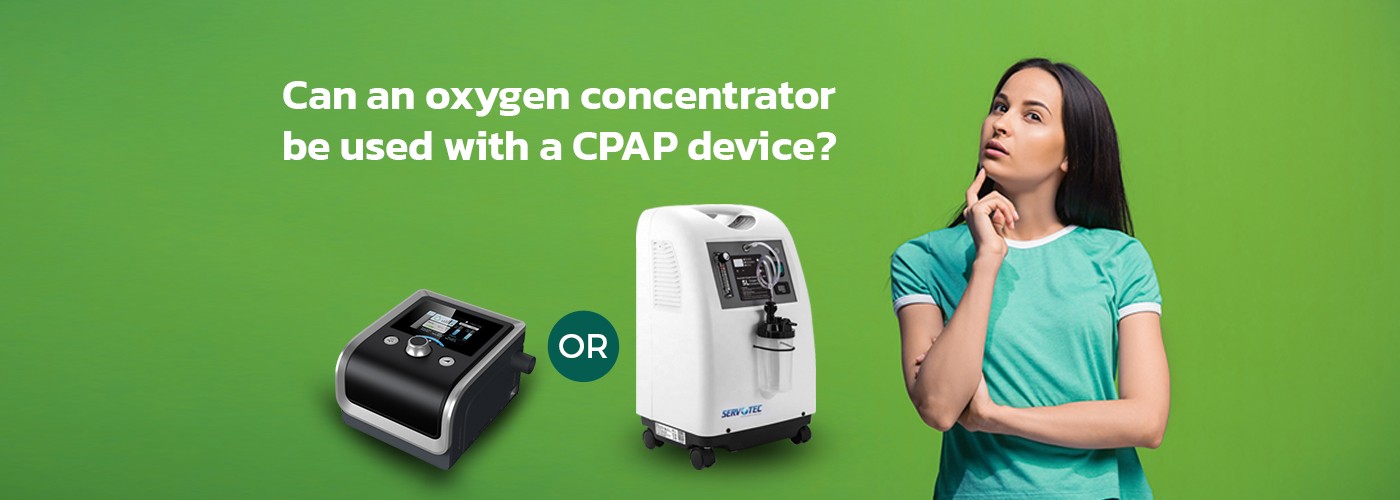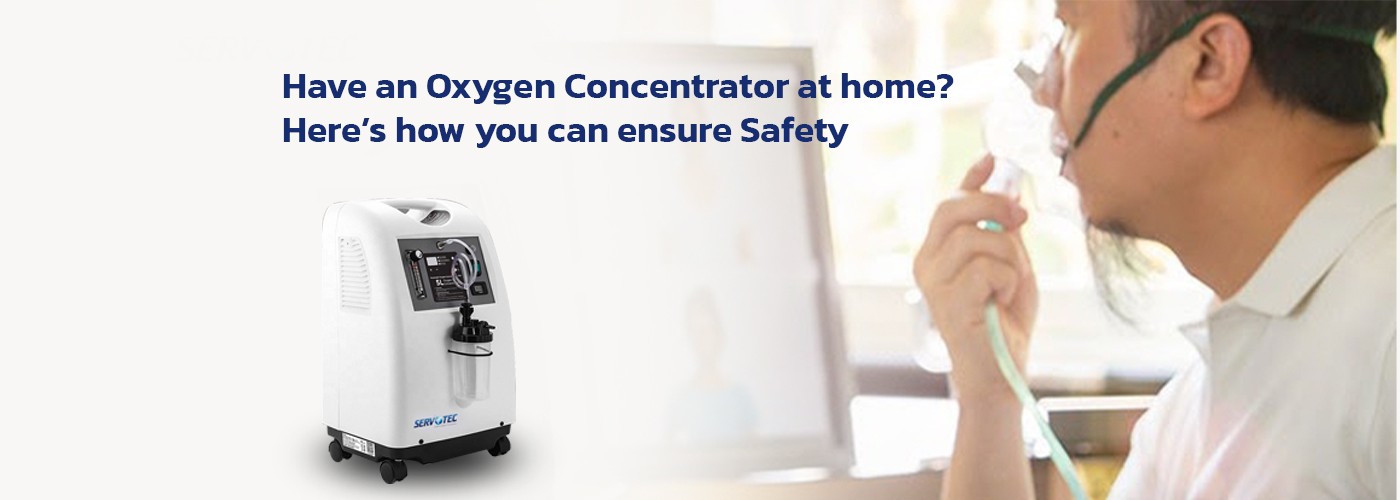Can an Oxygen Concentrator Be Used with a CPAP Device?

Next to Continuous Positive Airway Pressure (CPAP) equipment, which oxygen concentrator should you use? We felt it would be a great opportunity to respond to this specific issue while also expanding on the topic of using oxygen with CPAP in general.
Let’s start by looking at why you might need to use a CPAP machine, and then we’ll look at why you might need to utilize oxygen with CPAP.
Both an oxygen concentrator and a continuous positive airway pressure (CPAP) equipment are used to treat breathing problems and other comparable medical disorders. Despite this, the two gadgets are vastly different. While it is critical to follow your consulting doctor’s advice, it is also critical to understand the differences between the two.
What is a Continuous Positive Airway Pressure (CPAP) Machine?
Continuous Positive Airway Pressure is abbreviated as CPAP. A filter and a small water tank that works as a humidifier are included in the machine. It also includes a mask that is worn on the face to allow oxygen to be inhaled. With the help of a tube, the mask and the machine unit are connected. The equipment is especially beneficial for people who suffer from obstructive sleep apnea. It allows patients to breathe more easily and sleep well. The equipment increases the air pressure in the throat, preventing the airway from collapsing during inhaling. The use of a CPAP machine has also been shown to help with snoring.
What is the difference between an oxygen concentrator and a continuous positive airway pressure (CPAP) machine?
The functions of an oxygen concentrator and a CPAP machine are different. They serve two distinct functions. As previously stated, an oxygen concentrator removes nitrogen and other gases from the ambient air to create rich oxygen for breathing. A CPAP machine, on the other hand, does not increase oxygen levels. This equipment provides high pressure to keep the throat open and the obstructive sleep apnea disease under control.
The phrase “sleep apnea” refers to both central and obstructive sleep apnea. Obstructive sleep apnea (OSA) is the most prevalent of the two kinds of sleep apnea.
If your doctor has previously diagnosed you with obstructive sleep apnea (OSA), you most likely have a CPAP machine that you use at night while sleeping. The main purpose of a CPAP machine is to keep your airway open while you sleep by using pressured air. The pressurised air, on the other hand, retains the same normal oxygen concentration as regular air, which is 21% oxygen. OSA can progress to major consequences if left untreated, although the immediate effect is a continuous lack of oxygen during sleep.
If your doctor determines that your oxygen levels drop too low or too frequently while you sleep, even while using a CPAP machine, supplemental oxygen may be prescribed to be used in conjunction with your CPAP machine to maintain normal oxygen levels. This is accomplished by infusing oxygen into your CPAP system to raise the oxygen percentage to more than 21%.
If you’ve come this far in your therapy and are wondering how a CPAP machine and an oxygen concentrator would function together, the answer is simple.
Using an oxygen concentrator and a CPAP machine at the same time
Doctors recommend using an oxygen concentrator and a CPAP machine at the same time for certain difficult medical problems. When a patient has pulmonary edoema as well as obstructive sleep apnea, this might be a problem. To recover from this situation, the patient needs a steady supply of oxygen as well as a device that applies pressure to the neck. Both of these goals can be met by combining an oxygen concentrator with a CPAP machine. With the use of an oxygen concentrator, the amount of oxygen in the ambient air will be raised, and pressure to keep the throat open will be provided using a CAPA and Bipap machine.
When turning both machines on and off, there is another method to follow.
Always switch on the CPAP machine first, before turning on the oxygen concentrator. When you’re finished with them, switch off the oxygen concentrator first, then switch off the CPAP machine. Because high oxygen concentrations can damage the CPAP machine over time, this treatment is required.
The Upshot
Hopefully, you can see how simple it is to use oxygen with CPAP, regardless of the brand of oxygen concentrator you already have. You may easily connect these two devices using a simple adapter (or the connector already on your mask) and oxygen tubing and go about enjoying a nice night’s sleep.
Read also: Unique Understanding Molecular Sieves and how they ensure Purity Levels in Oxygen Concentrators




